Don't wanna be here? Send us removal request.
Text
Snapchat: Beyond the “Filters” (Media Switch-Up Six)

As the slogan says, Snapchat is the “fastest way to share a moment,” which is accurate as the well-known app for photo and video which launched in 2011 originally only gave users 10 seconds to share a moment. Formally known as Picaboo, founder Bobby Murphy saw fit that would allow photos to be sent that would eventually…well, disappear. This sparked controversy amongst users so they introduced the screenshot feature that would show indication of the photo being screenshot. As the era of the app went on and rebranded as Snapchat, soon came video, filters, stories and chat, geofilters, memories, and of course the discover page.
youtube
youtube
Since the big rebrand, a 2018 study shows that 188 million users are active on Snapchat daily. In that same study, 71% of Snapchat users are under the age of 34.
For a while, I was a huge lover of Snapchat (since Summer 2016). I loved the idea of the creative filters they offered as well as being notified of a screenshot just in case someone decided to be sneaky or “messy” for whatever reason. I even loved seeing the news on the discover page as well as the advertisements they had to offer. However, when the app began to change as it allowed people to see exactly where you were like some sort of “ghost filter” and it stopped showing when people were unfriending you from Snapchat, I grew uninterested. While it didn’t matter who unfriended me or not, there have been times where I wanted to communicate with someone not knowing we were not friends on the app. I also didn’t like the feeling of being watched. And when Instagram became more popular, it was more convenient for me since I am a regular Instagram user anyway.
Although I am one of many millennials who no longer use the app, another 2018 study shows that 92% of Snapchat users are generation Z (ages 12-17 years old), literally 2% behind early millennials ages 18-24.

What’s interesting is the fact that more teens and children use Snapchat not only because of the filters but because they offer SnapKidz, for children under 13. While they have this feature for children, it is very different from regular Snapchat as children are not allowed to share images or videos with anyone. With SnapKidz however they can write/draw on the app versus using a paper coloring book.
Despite those children and teens who use it more than most age groups except 18-24 year old millennials, people use Snapchat to get their news as well. CNN, NBC, ESPN, Wall Street Journal and The New York Times all use Snapchat to provide the latest news, weather, sports, gossip in entertainment, etc.
Although Snapchat is used by millions of individuals daily, brands make up that amount too. Brands such as Taco Bell, Acura, Gatorade, Sour Patch Kids, Amazon, and even Netflix uses Snapchat. Brands use Snapchat for contests, promote new products, coupons, behind the scenes scoops on movies and television shows, and targeted videos for different audiences. Brands who use Snapchat uses a certain type of strategy to gain their audience attention.

Netflix created a Snapchat filter and a Snapchat story for Stranger Things when the new season dropped.

youtube
The creators of X-Men even created Snapchat filters to promote their new movie, X-Men: Apocalypse.

Snapchat overall is popular in fact it has been the 6thmost popular social media app in the US since 2018. Remember, it’s not just for photos and videos with filters, its for all aspects of content that is provided on any other digital platform.
0 notes
Text
Local News Can Do What National News Can Too (Media Switch-Up Five)
Social Media and Smartphones have completely taken over the 21stCentury. While the Silent Generation, Baby Boomers and half of Generation X are not the real consumers of social media and smartphones, millennials take the cake when it comes to owning a smartphone and social media accounts. (shown below)

In most cases, they use their smartphones and social media to grasp information on the latest entertainment and sports news, but they also grasp information regarding not only national but local news as well. In fact, it is because of Instagram that these social media consumers are aware of the latest Ethiopian Plane Crash, The 2020 Presidential Candidates, etc.

View this post on Instagram
A post shared by The Shade Room (@theshaderoom) on Feb 1, 2019 at 6:15am PST
Although millennials, Gen Z and half of Gen X uses their social media and smartphones to find out the latest news, watching the news on television still exists. In fact, studies show that 85% of 65+ year olds and 72% of 50-64 year olds prefer to watch the news on television. In that same study, 80% of Americans prefer to watch their news on television.


While the news is probably the most watched program on television, it is because of television that we are able to watch the news in the first place. In 1927, the first television was created; later in 1948, the first cable service was delivered in Oregon, Arkansas and Pennsylvania. Cable tv later expanded to major metropolitan areas in 1960, DC, Maryland and Virginia was among that group. While cable has had its long run, news stations were already in existence. In fact, NBC (National Broadcasting Company) was founded in 1926 and it is the oldest news station of the chains; CBS (Columbia Broadcasting System) came a year after in 1927. Nearly 20 years later, ABC launched in 1943. CNN (Cable News Network) launched in 1980; Fox is the youngest company as they launched in 1986.
Being as though these are the top broadcasting news companies, they often compete nationally. Not only do they complete nationally, but locally as well. In fact, all of the news stations with the exception of CNN are headquartered in the Northwest area of DC. These local news stations capture everything that goes on in the area as well as in other cities and countries outside of the DMV. In fact, just recently Fox 5 DC broke a news story as NBA player Kevin Durant lost his adopted brother Cliff Dixon to gun violence outside of an Atlanta nightclub. Despite the fact that incident occurred in another state, the victim was a DMV area native as well as a former G league basketball player in the NBA.
http://www.fox5dc.com/news/local-news/kevin-durants-adopted-brother-cliff-dixon-killed-outside-atlanta-area-strip-mall-report
Not only did they cover this story, but CBS also covers stories outside of the area; NCAA tournament is not only covered by CBS but it is also the official sponsor of the tournament and the majority of their games are shown on there as well.
No matter what type of story, good or bad, happy or sad, local or national, local news covers if not all just as much as national news outlets do. No matter how much details they provide, they still give the same story and provide the same content.
0 notes
Text
YouTube...More Than a Video Service (Media Switch-Up Four)
Since 2005, YouTube has been the number one streaming service for video, as it currently has nearly 2 billion active users, over 30 million daily active users, and approximately 300,000 television paying subscribers. Founded by Susan Wojcicki and headquartered in San Bruno, CA, the service has taken the world by storm. What started off as a music video site, has become a tutorial, blog, movie, television show, and even an interview site. For years, I’ve been accustomed to YouTube, but never really used it as a news streaming service. Millennials, like myself use the streaming service for other things than other age groups. In fact, studies show that 96% of 18-24-year-old Americans use Youtube and 25-34-year-old Americans follow right behind with 95%; while only 50% of Baby Boomers and above use the app as of January 2018.

When it comes to my YouTube usage, I enjoy watching the latest episode of “The Breakfast Club,” which is a radio show that features interviews from trending celebrities or talks about the latest issues going on in the world.
youtube
I also use YouTube for makeup and hair tutorials since that is what I take most interest in. I even use YouTube to watch sitcoms that no longer come on television anymore, DIY things, movie trailers and even to see what a vacation resort really looks like.
Unlike my interests, a recent article shows that the most popular content on YouTube (top 13) include product reviews, memes, educational videos, Q&As, etc. (Top 3 are: product reviews, how-to’s, and vlogs)
http://mediakix.com/2016/02/most-popular-youtube-videos/#gs.1whQ17Tb


While YouTube has always been a safe place for content, as inappropriate or stolen content often gets blocked and/or removed, recently YouTube has unfortunately been a not so safe place specifically for children.
As many may know, YouTube Kids launched in 2015 as a safe haven for kids to enjoy content that is kid friendly. In 2017, it was reported that YouTube Kids had 8 million viewers. However, the number of viewers for YouTube Kids may decline. Tuesday morning, a report went out that there was content on YouTube Kids that was teaching them how to commit suicide. A figure named, “Momo” is ordering children to commit harm to themselves or others by popping up on the children’s popular YouTube shows such as Fortnite, a pig show, and a few others while an adult figure is not in the room with them.
https://www.cnn.com/videos/us/2019/02/28/youtube-kids-suicide-videos-sot-mxp-vpx.hln
https://www.nbc4i.com/news/local-news/youtube-addresses-momo-challenge-suicide-prevention-program-recommends-talking-to-kids/1817852917
YouTube’s creator and team has been aware of this issue and are working to fix the issue. In fact, they have even made an announcement to disable nearly all comments from the kids’ videos following issues of child predators sexualizing themselves in their comments.
https://variety.com/2019/digital/news/youtube-comments-disabled-kids-videos-1203152191/
These recent incidents have caused users, including myself to stay away from YouTube for the time being. While YouTube is facing numerous amounts of issues, it doesn’t take away from the amounts of things I’ve learned how to do as well as took away from watching different videos. Even the news I would learn from watching “The Breakfast Club” has always been engaging as well. YouTube needs to continue being that safe haven not only for children but for adults as well.
0 notes
Text
Facebook Matters to Some More Than Others (Media Switch-Up Three
Despite all of the backlash this social media application has received lately, there are people who still get on Facebook. If you aren’t aware of the backlash it is all thanks to a privacy scandal that occurred last month. According to news outlets, the app was accused of granting large companies such as Spotify and Netflix access to users’ data without permission. The article below gives more detail in regards to the incident:
https://www.usatoday.com/story/tech/2018/12/19/facebooks-latest-privacy-scandal-what-we-know-now/2361257002/
Although Mark Zuckerberg and his team were in hot water from the incident, which led to thousands of users (specifically millennials) to delete their page, the app continues to sky rocket as the leading social app there is. In fact, it was reported that there were over 2.3 billion active Facebook users 3rd quarter 2018.
Since Facebook launched, I’ve had two Facebook accounts. My first one, which now no longer exists, was my muse when Myspace went down the drain. My friends and I used the app to communicate with each other when we weren’t in the same class period in high school. We also used it to post photos from the first day of school, weekends out, and even prom; photos in which were not inappropriate for people to see. During that time, I friended all people who were in the same age category as me (millennials), but since then, times have changed. I now use my Facebook to network with those who I haven’t seen or spoken to in years. I also use my Facebook to see inspirational videos and posts. I even use my Facebook to join different groups that’ll be beneficial to my career. Half of my friends list, however consists of adults (my parents, family members, preachers, and even people who can help me get a job in my field.) Because of that, I have distanced myself from the app. Not because of what I would post, but because of what I would see on my newsfeed that isn’t news worthy.
Facebook went from being the outlet for millennials to being the gossip column and “business spreader” for baby boomers and gen-x. For a while, the majority of Facebook users were from the generations, now studies show that our generation takes over Facebook news feeds.

To me, Facebook brings negative energy because people do and say crazy things for “likes” and “shares.” Instagram is more of a positive setting for me simply because people can post negative things on there but I am still able to find a photo, tutorial or quote that’ll lift up my spirit and bring positivity into my world. Facebook is a different place. Facebook users I friend will post things such as “Post a picture in my comments section and I will rate you on a scale of 1-5,” or they will post about their every move “I am getting drunk and....” not knowing that everyone, including potential employers can see it. Instagram’s privacy settings, to me, are more secure than Facebook. Proof: personal experience.
April 2016, my friends and I had just received word that we had been selected as interns at Duke University. I remember going to visit my professor/advisor/mentor to talk about who made it and who didn’t. There was one student that they loved so much and they decided not to pick her; it was her Facebook that didn’t land her the job. I remember seeing how angry and disappointed my professor was because they were rooting for her; she was embarrassed simply because we were put at a higher standard and expectation going into these interviews. This young lady didn’t think that one older post that said, “I’m so h***y, I want f*** and s*** on something,” would result in a missed job opportunity. Honestly, it wasn’t expected from her being as though she was a Magna Cum Laude student. It was a shock to all of us. The moral of the story is not to just watch what you put on Facebook, but watch what you post period.
Of course millennials run social media, however adults aren’t any better with controlling themselves on there either. In 2017, it was reported that 84% of Facebook users are between the ages of 30-49, 72% are between the ages of 50-64, and 62% are 65+. Data also shows that women use the app more than men.

Americans though are not majority of Facebook users in the world. In fact, studies show that Asia and the rest of the world made up most of Facebook’s users than the US/Europe and Canada 4th quarter 2018.
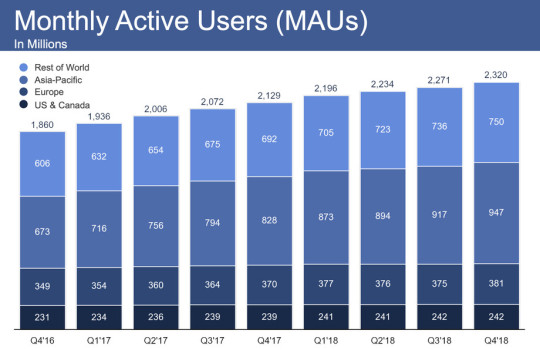
Although Facebook is popular to some, it is not to others. Users, like myself, would rather use something else and make Facebook the last resort. Some brands though don’t feel that way. Studies show that Starbucks, Coca-Cola, and Oreos are the top three brands that have over 10 billions fans.
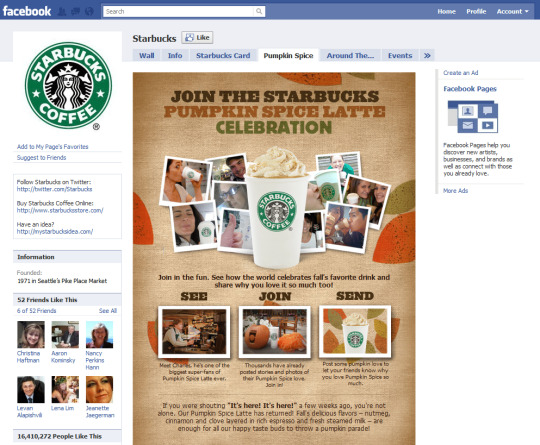
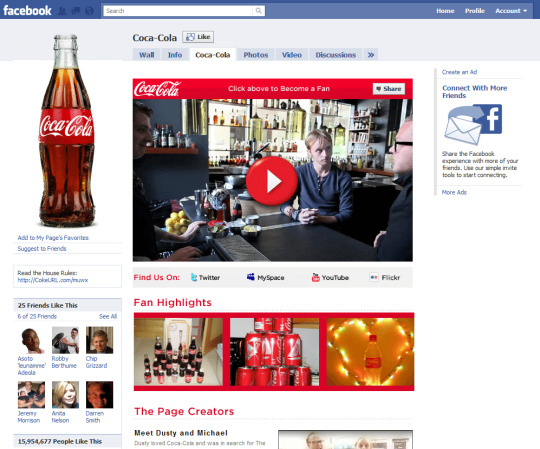
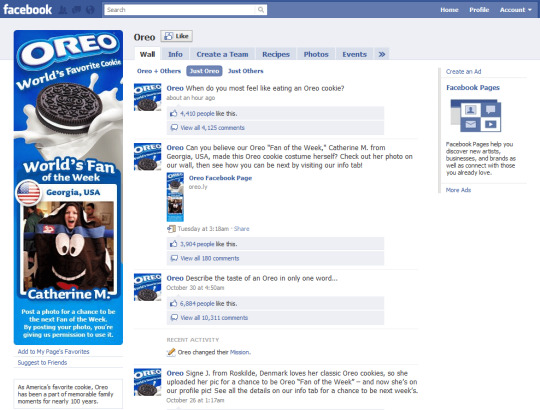
In 2015, it was reported that Fox news, Huffington Post, and ABC news were the three largest news pages with over 100 billion fans. Details follow here: https://blog.crowdtangle.com/the-biggest-news-pages-on-facebook-in-2015-c429f9307a8f
0 notes
Photo
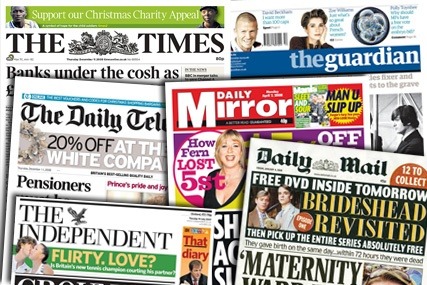
PRINT STILL EXISTS! Media Switch Up Two - 1.24.19
Growing up, I loved print media; I loved to read newspaper articles and look through magazines. When I would read the newspaper with my grandma, I would love to read about the latest game wins, movie reviews, funny comics and of course what was going on in the world, both negative and positive, no matter how it made me feel. When it came to magazines, I always looked up the latest trends in fashion/beauty and even what my celebrity crushes looked like at the time; I even had a collage of both fashion and my celebrity crushes in my back room (which was once the play room for my toys). One day, as I ran through the pages of one of my Seventeen magazines, I heard “Breaking News,” on the television; I became sad. Visually seeing a news report about someone being killed or missing was so heartbreaking. As a child, you never expect to visually see these stories after you read them; but I did. Literally the same story I just read an hour prior was on the television screen. My spirits soon uplifted when I heard about another story that I was reading on a cancer walk. From that day on, I realized digital media was emerging. Televisions, radios and even the internet captured everything I was reading in a newspaper article. However, the more I began watching the news the more I noticed the difference - the stories were more graphic and in depth on tv and the radio than it was a newspaper, well to me anyway.

The older I got and the first iPhone I received resulted in watching news casts less and less however I always held on to a newspaper and my social media outlets/the internet to gather my news. While the world has changed and digital media has taken over, print media still exists. In fact, my family and I still got the newspaper every week until Jan. 1, 2019.
In a 2017 article, Print vs. digital subscribers: Demographic differences and paths to subscription, studies show that 58% of subscribers prefer print media while 28% prefer digital. Print media is more popular for newspaper subscribers as well.
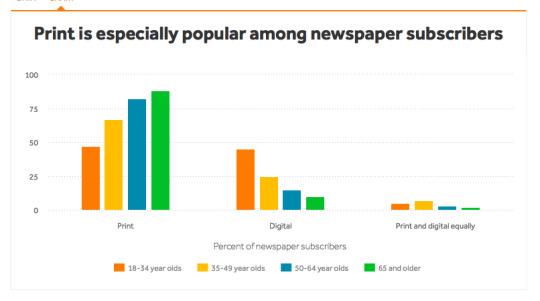
From further research, I learned that baby boomers and the greatest generation use more print media than any other generation. My grandparents, especially my grandfather reads the newspaper everyday; he has tons of them in his “man cave.” Before my grandma died, she also read the newspaper a lot however she did a combination of print and digital media to gather her news. My parents also use a combination of both to capture their news.
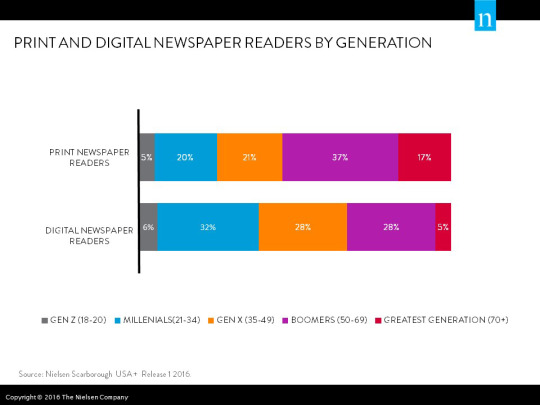
While its no secret older adults prefer print, some millennials also enjoy print media, like myself. Those millennials are more likely college students or already have a college degree. Print media also has a huge impact on brands/businesses as well.
In a article,10 REASONS PRINT MEDIA IS ALIVE AND WELL, they provide insight proving that print media still matters to brands. In fact, 56% of consumers say, “print marketing is the most trustworthy form of marketing.” Another fact suggests that print media helps establish a brand.
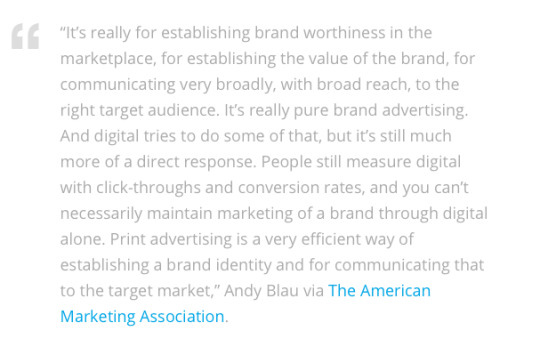
Brands today even still use print media. Brand such as Apple, Ford, Dove and even Ciroc all utilize print media alongside the digital media ads that they offer.
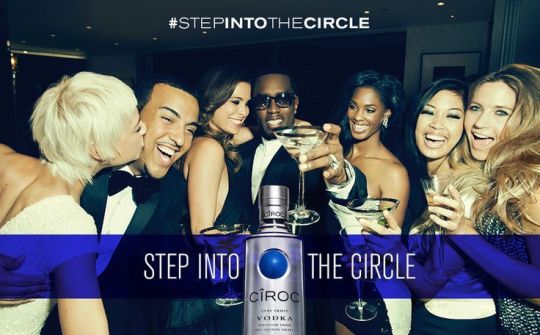
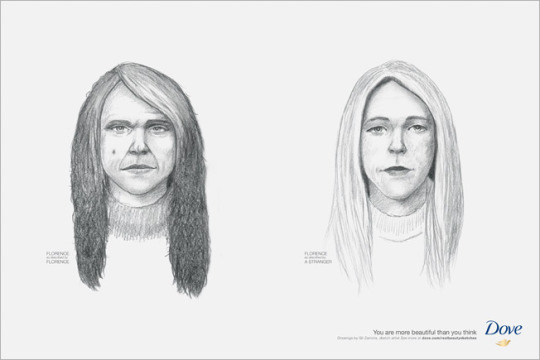
0 notes
Text
Switch Up Choice One - 1.17.19
This week, I’ve decided to shine my light on Twitter. Although I had a Twitter in high school, times have changed for the app within the past 7 years.
Compared to Instagram, as I use it often, it is very different to me because news stories and topics of discussion come in forms of a “tweet” vs. a photo or video with a caption attached.
What I discovered/found interesting about those who use Twitter is that people never miss a beat when it comes to certain topics. Take a look at the below tweets, for example:



As you can see, Trump went on to discuss his meeting with the Clemson Tigers as they won the National Championship in college football. Being as though he created a new term, “hamberders,” in which he actually meant “hamburgers,” everyone took to Twitter to either make a joke or memes about the tweet. Twitter is the leading app for takeaways when it comes to news stories.
I believe that the composition of the Twitter community is to react to what they automatically see in a certain amount of characters. The reactions soon differ when it comes to certain issues. In fact, the app has built different types of communities from what I’ve seen thus far; “Black Twitter” is one of them. The term, “Black Twitter” is defined as a cultural indentity of African American Twitter users around that world that focuses on issue that are of interest to them.
From looking at different Twitter feeds, I’ve noticed that they’ve still continue to have a character limit on how people can express themselves unlike Instagram, which gives you no limit to express how you feel about a news topic or ongoing issue. In certain cases, news videos or photos shown from news stories are placed on Twitter however it is more likely to appear on Instagram although Twitter May capture it first.
While on Twitter, I observed Apple and went back to tweets from the launch of the lastest Apple products. Apple’s CEO and communications team used the app to of course not only shed light on the keynote address, but also provided details on what the products looked like as well as the launch date and prices. Meanwhile, communities made memes, GIFs and expressed their reactions to the way the products looked and their prices as the prices have skyrocketed from previous products.
Overall, I’m very pleased by the way Twitter shares news stories and highlights certain topics. Sometimes, I think it’s important to share things in as little words as possible.
1 note
·
View note